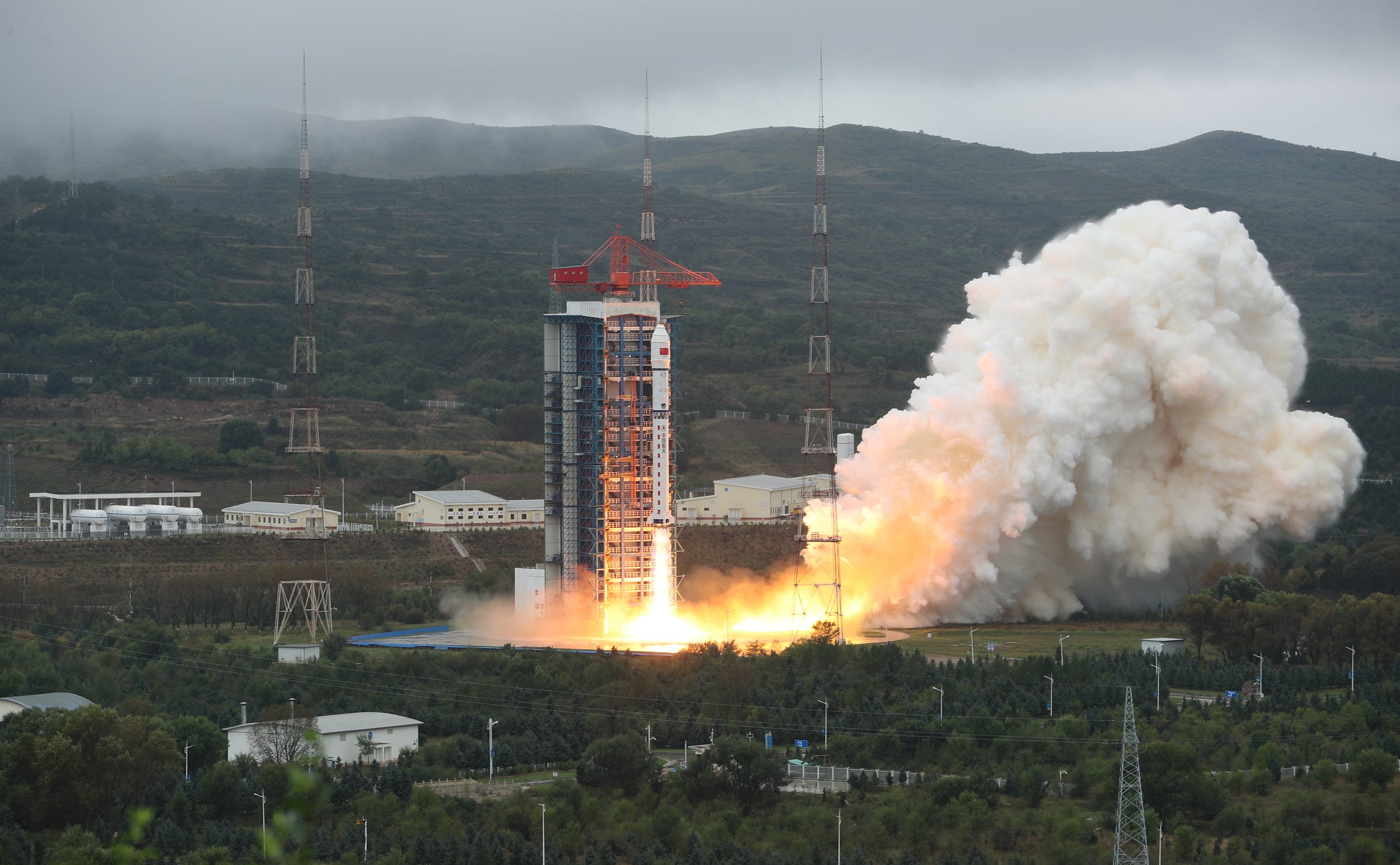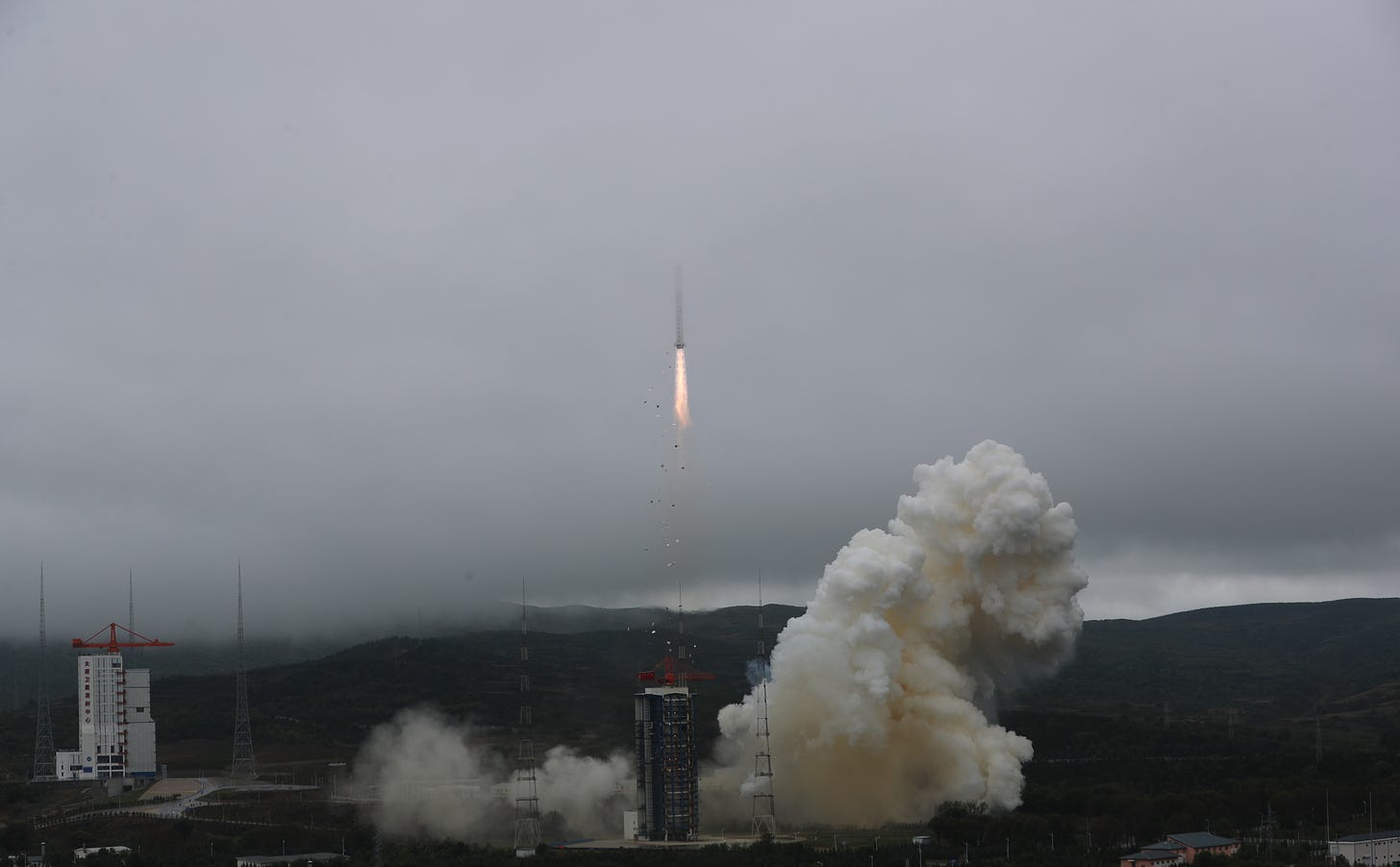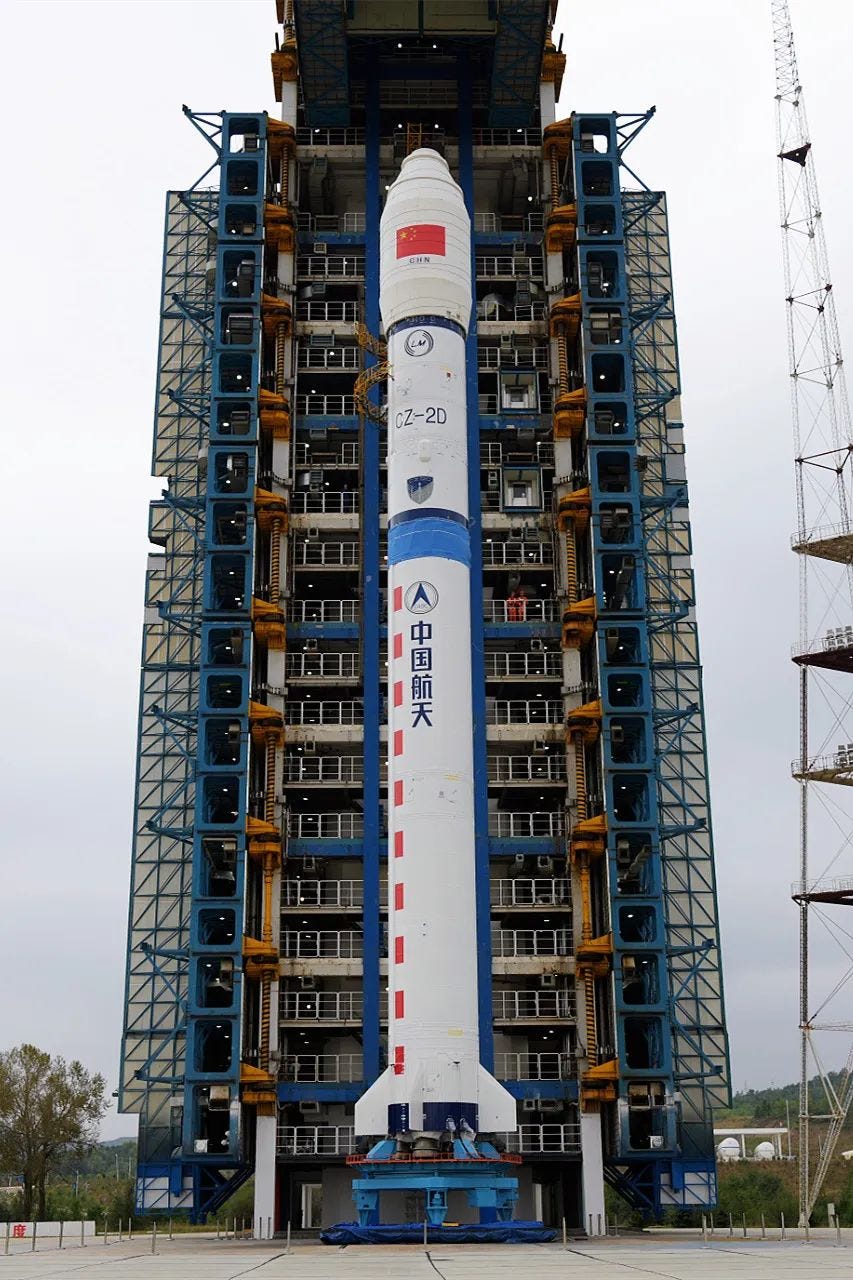There's a launch in the fog! [Long March 2D Y99]
Six more Jilin-1 satellties are now in space after blasting off from Taiyuan through foggy weather.

Hot on the heels of yesterday’s launch from Xichang, a Long March 2D lifted off from the Taiyuan Satellite Launch Center at 12:11 pm China Standard Time, or 04:11 am Universal Coordinated Time, on September 20th. The Long March 2D for this mission successfully flew to a sun-synchronus orbit.
Onboard the Long March 2D for this launch were six Jilin-1 (吉林一号) satellites as part of the Kuanfu-02B group. Four Jilin-1 Kuanfu satellites were in orbit prior to today’s launch.
The Jilin-1 Kuanfu satellites are believed to be remote-sensing spacecraft offering imaging resolutions between 0.5 and 4 meters to customers. Beyond this small part of the Jilin-1 fleet, one hundred and thirty satellites are believed to have been launched since late 2015.
All of the Jilin-1 satellites are thought to be operated by the Chang Guang Satellite Technology Corporation, which is a commercial offshoot of the Changchun Institute of Optics, Fine Mechanics and Physics (长春光学精密机械与物理研究所).

In their post-launch blog post on WeChat/Weixin, the Shanghai Academy of Spaceflight Technology highlighted that the Taiyuan Satellite Launch Center experiences worse weather for launches this late in the year, stating:
“In September, Taiyuan Satellite Launch Center is in the rainy season, and it is cloudy and rainy. For the situation of high humidity and long rainy time, the test team, on the basis of the previous rainproof measures, earnestly implements and carefully inspects the test team to ensure that not a single hidden danger is left for the launch.” — “The test team planned in advance and deployed carefully, practiced the operation before entering the satellite launch center, operated carefully after entering the site, and recorded the whole process of work one by one without letting go of any place that may lead to errors, so as to ensure the successful launch of the mission.”
(If there are any problems with this translation please do reach out and correct me).
The academy was also keen to highlight that the payload separation system was a ‘non-electrical explosion mechanism’ and was instead a ‘high-precision miniaturized ten-meter optical fiber inertial assembly’. This supposedly ensures better timing of payload separation.
This launch was the 536th launch of a Long March rocket overall, the 91st launch of a Long March 2D, the 218th Long March vehicle launch for the Shanghai Academy of Spaceflight Technology, and the 42nd launch from China this year.
Liftoff video via 航天五线谱 on Weibo.
As of writing (September 20th), the Y number for this launch is believed to be Y99, this may change if clarified by the manufacturer.
Chinese companies, state-owned and private, use Y followed by a number to serialize launch mission numbering, similar to NASA with STS.
Check out the previous Long March 2D launch
What is the Long March 2D?
This section is for those less familiar with China's Long March series of launch vehicles.
The Long March 2D is also one of the oldest launch vehicles from China performing missions regularly to low earth and sun-synchronous orbits by the Shanghai Academy of Spaceflight Technology, as a two-stage version of the Long March 4 vehicles. The two stages of the launch vehicle both burn Dinitrogen Tetroxide and Unsymmetrical Dimethylhydrazine.
The payload capacity of the launch vehicle is currently as follows:
3,500 kilograms to low Earth orbit
1,300 kilograms to a sun-synchronous orbit
The first-stage is powered by four YF-21C engines, which generate 302 tons of thrust burning Dinitrogen Tetroxide and Unsymmetrical Dimethylhydrazine. The second-stage is powered by a single YF-22C engine and four YF-23C verniers that generate 80 tons of thrust while also burning Dinitrogen Tetroxide and Unsymmetrical Dimethylhydrazine.
On the launch pad, the Long March 2D is 41.05 meters tall and weighs 232,250 kilograms when fully fuelled. The first and second stages have a diameter of 3.35 meters, with the fairing having a diameter of either 3.35 or approximately 4 meters.
So far the Long March 2D has flown from all three inland launch sites, the Jiuquan Satellite Launch Center, the Taiyuan Satellite Launch Center, and the Xichang Satellite Launch Center.






![SAST and ExPace fly to SSO [Long March 2D Y98 & Kuaizhou-11 Y4]](https://substackcdn.com/image/fetch/w_1300,h_650,c_fill,f_auto,q_auto:good,fl_progressive:steep,g_auto/https%3A%2F%2Fsubstack-post-media.s3.amazonaws.com%2Fpublic%2Fimages%2F78bb4b86-f7da-4b17-b77d-817e4a410e48_780x456.png)
